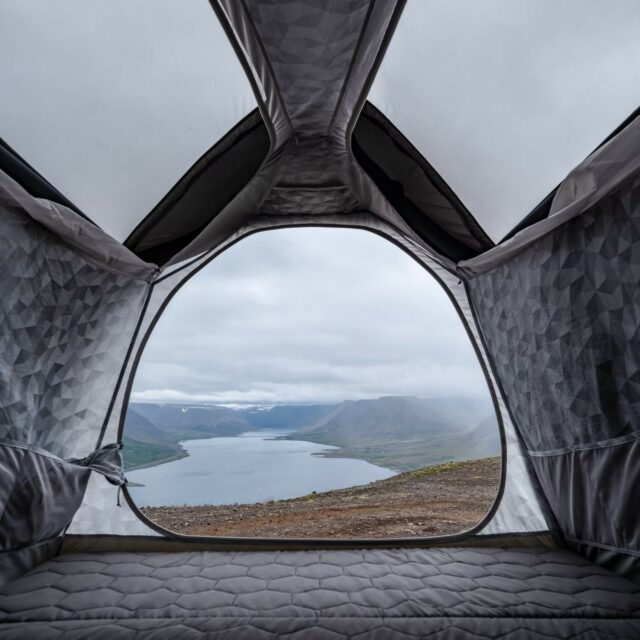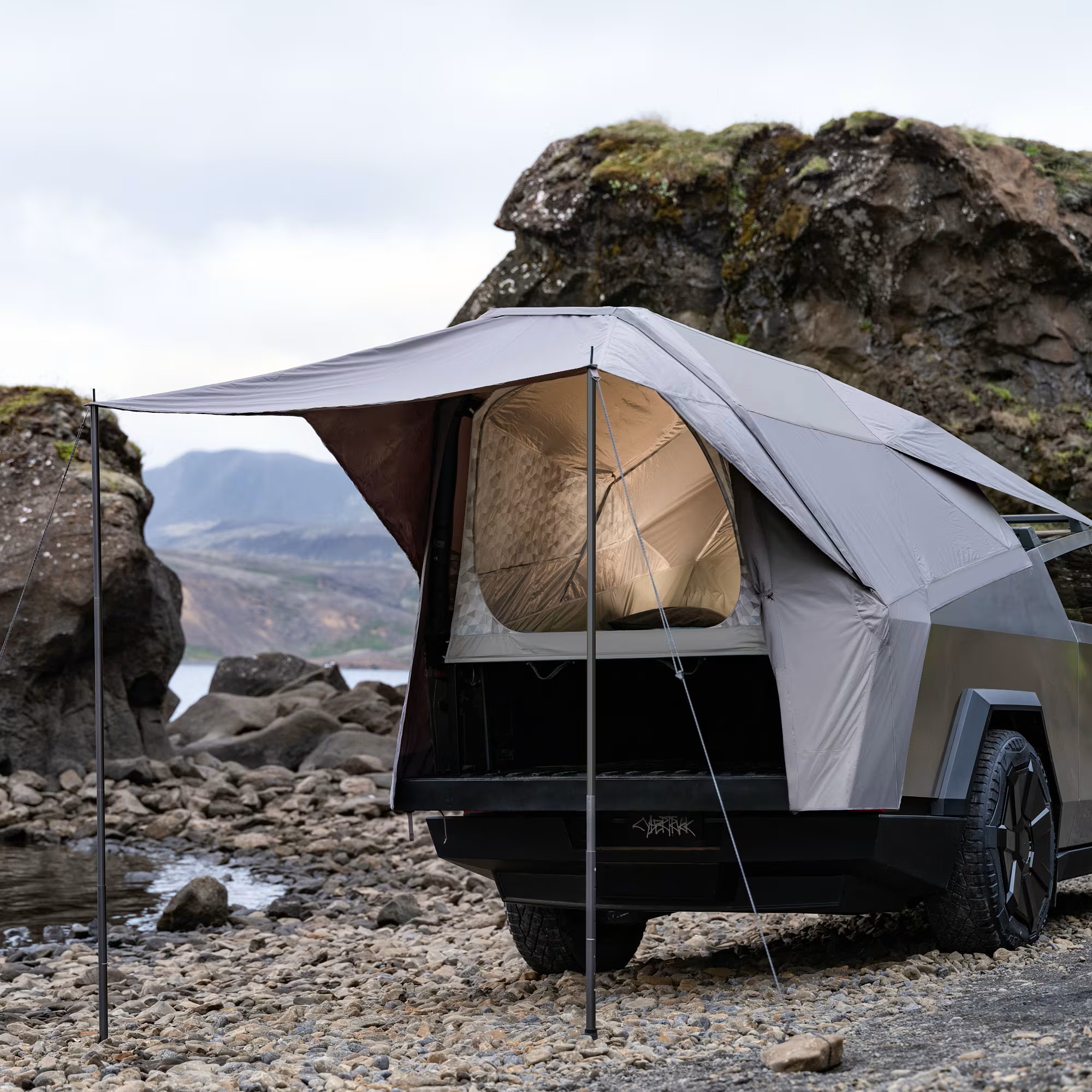Last week, we introduced you to the aftermarket Space Camper for Tesla’s Cybertruck, a $24,000 camping solution. As always, Tesla is ahead of the curve and already has a much more basic and infinitely more affordable camping solution for the Cybertruck. Essentially, the Basecamp is an inflatable, vehicle-specific canvas tent that should take no longer than the average soft-shell rooftop tent to deploy and offers sleeping for a couple. The Basecamp is, however, much lighter and more compact than even the smallest rooftop tent. The Basecamp is an addition to Tesla’s suite of accessories for the Cybertruck, aligning with the vehicle’s futuristic design and multifunctional use.
The Cybertruck Basecamp features a unique ultra-light, geodesic air-frame design that allows for rapid tent inflation using a manual pump, eliminating the need for traditional structural poles. The tent’s interior is crafted from a tactical gray kaleidoscope-patterned nylon, offering aesthetic appeal and protection from the elements. For ventilation and a view of the surroundings, the Basecamp has screen windows that allow airflow while keeping the interior comfortable.

One of the most attractive features of the Cybertruck Basecamp, other than the price (more on that below), is its integration with the Cybertruck’s design and functionality; the Basecamp is carefully designed to complement the vehicle’s appearance and angular lines. The tents placement on the truck is also strategic; it is mounted above the truck bed but under the tonneau cover, conserving the bed storage space and the vehicle’s range. This design choice ensures that there is ample space beneath the tent for storing gear either in the purpose-made Cybertruck Vault Storage Bins or in a custom drawer system. Bear in mind, though, that should the truck be purchased with the extra battery pack, aka the Range Extender (essential for most overlanders), and the spare tire be stored in the load bed, there won’t be much space available for gear. But, seeing that Basecamp only accommodates two people, the truck’s back seat could double as a cargo area. Don’t bring a dog.

Conveniently, the Cybertruck’s truck bed outlets remain accessible from the Basecamp, allowing for the charging of devices even when off-grid. The Basecamp includes a feature called “Tent Mode,” accessible via the vehicle’s touchscreen, which promises to enhance the camping experience. However, specific details about this feature’s functions are still under wraps.
The Cybertruck Basecamp package includes:
- The tent assembly;
- An awning with poles;
- An air pump;
- L-track brackets;
- Various accessories, such as stakes and a repair kit.
However, it’s important to note that the Basecamp is incompatible with Cybertruck MOLLE Panels, and the tent cannot be deployed when the Cybertruck Vault Cargo Divider is installed. Tesla has included shipping to the preferred Tesla Service Center and installation with the purchase.

It is the base price of the Basecamp, which is likely to make this a very popular purchase for new Cybertruck owners. At just over $2,900, the Basecamp fits well within the mid-range of a new soft-shell rooftop tent. Its advantage lies in not occupying space on the vehicle’s roof, thereby reducing the drag coefficient with no detrimental effect on the overall range. The roof of the Cybertruck can be equipped with Tesla Crossbars and loaded with a few Pelican boxes or similar.
$2,975 | tesla.com
Read More: The Versatile Freedom Mog 2.0 Overland Camper Gives Us the Fizz
Our No Compromise Clause: We do not accept advertorial content or allow advertising to influence our coverage, and our contributors are guaranteed editorial independence. Overland International may earn a small commission from affiliate links included in this article. We appreciate your support.


